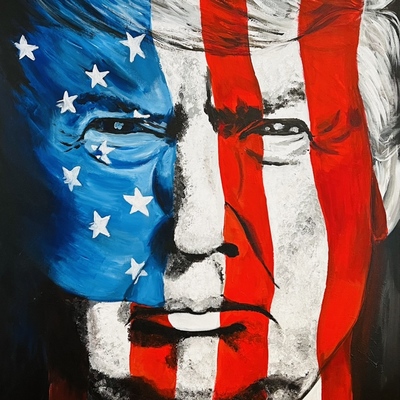Stay informed on the latest Truth Social posts from Donald Trump (@realDonaldTrump) without the doomscrolling. Consider it a public service for your mental health. (Why?)
- A 50% tariff on copper will be implemented, effective August 1, 2025.
- The tariff is based on a robust national security assessment.
- Copper is essential for various critical components including Semiconductors, Aircraft, Ships, Ammunition, Data Centers, Lithium-ion Batteries, Radar Systems, Missile Defense Systems, and Hypersonic Weapons.
- Copper is the second most used material by the Department of Defense.
- Past and current 'Leaders' are responsible for decimating the copper industry.
- The 50% tariff will reverse the Biden Administration’s actions.
- America will re-establish a dominant copper industry.
A 50% tariff on copper is expected to have a significant impact on S&P 500 companies, particularly those in manufacturing, technology (semiconductors, data centers), defense, and renewable energy (lithium-ion batteries), due to increased input costs. Domestic copper mining companies within the S&P 500 could see benefits, while overall inflation expectations may rise, affecting corporate profitability and consumer spending.
The announcement of a substantial tariff on copper, framed as a national security measure, indicates a potential for increased trade tensions with other nations that are major copper producers or consumers. While not a direct threat of military conflict, such protectionist measures on a critical commodity could prompt retaliatory trade actions, leading to strained international economic relations.
- Commodities: Copper (LME, COMEX) prices for US domestic consumers are expected to rise significantly, potentially creating a divergence between US and global prices. Gold (XAU) is likely to rise as an inflation hedge and a safe-haven asset due to increased trade uncertainty. Oil (WTI) may see indirect effects from shifts in global industrial sentiment.
- Currencies (Forex): The US Dollar Index (DXY) could strengthen on 'America First' policy rhetoric and potential capital repatriation, but may also face downward pressure if global trade war concerns significantly escalate. Currencies of major copper-exporting nations (e.g., Chile, Peru, Australia) or nations reliant on copper imports could experience increased volatility.
- Global Equities: S&P 500 companies reliant on copper imports are expected to face higher input costs, potentially impacting earnings; conversely, US domestic copper mining and processing companies are likely to benefit. Global equities may experience risk-off sentiment due to broader trade war fears and potential supply chain disruptions, particularly impacting industrial, technology, and defense sectors. Short-Term Watchlist: Futures open, VIX spike/dip, FANG/semis/defense sectors. Medium-Term Focus: Earnings revisions, macro data (ISM, PMI), global capital flows, geopolitical overhangs.
- Fixed Income (Bonds): US 10Y and 2Y yields are likely to rise due to increased inflation expectations stemming from higher copper prices and potential supply chain disruptions. There may be a temporary flight to safety into US Treasuries if global trade tensions significantly escalate, but inflation concerns would provide counter-pressure. Credit spreads could widen for companies heavily reliant on copper. Short-Term Watchlist: UST 10Y yield levels, TED spread, credit ETF flows (e.g., HYG). Medium-Term Focus: Fed dot plots, fiscal concerns, debt ceiling rhetoric, economic surprise indices.
- Volatility / Derivatives: The VIX is expected to spike significantly due to heightened policy uncertainty, trade friction, and potential supply chain disruptions. Options positioning related to industrial, technology, and materials sectors could amplify market moves. Short-Term Watchlist: VIX levels vs VIX futures term structure, 0DTE flow, SKEW index. Medium-Term Focus: Volatility regime shifts, macro policy uncertainty, systemic tail risk (e.g., elections, war).
- Crypto / Digital Assets: Bitcoin (BTC) may initially react as a risk-on asset, showing correlation with broader tech stock movements. However, if the policy leads to significant traditional market instability or inflation, BTC could increasingly be viewed as a macro hedge. Regulatory news concerning commodities or trade could indirectly affect sentiment. Short-Term Watchlist: BTC/USD, Coinbase order book activity, funding rates, ETH correlation. Medium-Term Focus: Regulatory news, stablecoin flows, ETH upgrade progress, macro liquidity backdrop.
- Cross-Asset Correlations and Systemic Risk: Potential for a breakdown in normal cross-asset correlations, particularly between equities and bonds, if both face simultaneous pressures from inflation and risk-off sentiment. Increased scrutiny on supply chain resilience and potential for broader trade retaliation could elevate systemic risk. Short-Term Watchlist: MOVE index, junk bond ETFs, gold/USD co-movement. Medium-Term Focus: Shadow banking risk, central bank intervention, market plumbing stress.
- Retail Sentiment / Market Psychology: The announcement is likely to generate significant discussion and speculative interest among retail investors, particularly in US-based copper mining companies, renewable energy firms (due to battery relevance), and defense contractors. Social media trends could highlight specific stocks or sectors. Short-Term Watchlist: GME/AMC volume, Twitter/X trends, Reddit sentiment, TikTok mentions. Medium-Term Focus: Social media influence on market structure, potential for coordinated retail pushes, policy/regulatory crackdown on retail trading behavior.

